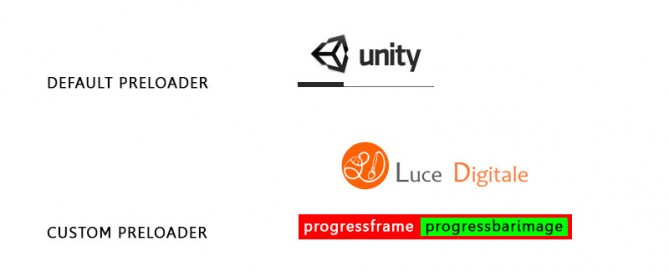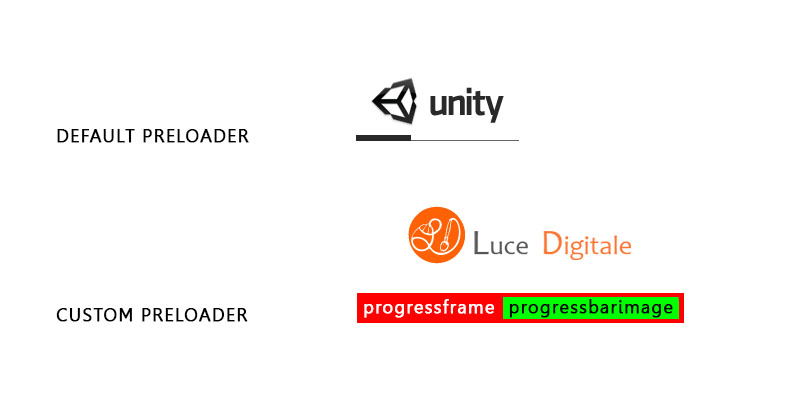Unity 3D – Game Engine – Responsive and Adaptive Apps
Responsive Web Design (RWD) is a Apps design approach aimed at crafting sites to provide an optimal viewing experience—easy reading and navigation with a minimum of resizing, panning, and scrolling—across a wide range of devices (from mobile phones to desktop computer monitors)
Basics Screen.width and Screen.height
Inside Hierarchy create:
– Main Camera
– GUI Text
– GUI Texture> Inspector> W=200(width pix) H=200(height pix), attach ‘Adaptive.js’
Adaptive.js
#pragma strict
// Hierarchy DRAG E DROP over var GUI Text in Inspector
var scoreTextX : GUIText;
private var screenres : String;
function Update () {
// it will check resolution every frame
screenres = Screen.width + " " + Screen.height;
scoreTextX.text = "Screen width & height (pix) "+ screenres;
}
Hierarchy> GUI Texture> Adaptive.js DRAG AND DROP over public var ‘scoreTextX’ the ‘GUI Text’ game object.
The result on my Samsung SmartPhone (Landscape) is: Screen width & height (pix) 800 480
GUI Texture – Full Screen
Adaptive.js
#pragma strict
// Hierarchy DRAG E DROP over var GUI Text in Inspector
var scoreTextX : GUIText;
private var screenres : String;
function Update () {
// it will check resolution every frame
screenres = Screen.width + " " + Screen.height;
scoreTextX.text = "Screen width & height (pix) "+ screenres;
// Move the object to (0, 0, 0)
transform.position = Vector3(0, 0, 0); // equal than Inspector> Position X=0 Y=0 Z=0
guiTexture.pixelInset = new Rect(0f, 0f, Screen.width, Screen.height); // equal than Inspector> W=800 H=480
}
Notice:
Position X=0 Y=0 Z=0
Inspector> W=800 H=480
GUI Texture – Half Left Screen
Adaptive.js
#pragma strict
// Hierarchy DRAG E DROP over var GUI Text in Inspector
var scoreTextX : GUIText;
private var screenres : String;
function Update () {
// it will check resolution every frame
screenres = Screen.width + " " + Screen.height;
scoreTextX.text = "Screen width & height (pix) "+ screenres;
// Move the object to (0, 0, 0)
transform.position = Vector3(0, 0, 0);
guiTexture.pixelInset = new Rect(0f, 0f, Screen.width*0.5, Screen.height);
}
GUI Texture – Half Right Screen
Adaptive.js
#pragma strict
// Hierarchy DRAG E DROP over var GUI Text in Inspector
var scoreTextX : GUIText;
private var screenres : String;
function Update () {
// it will check resolution every frame
screenres = Screen.width + " " + Screen.height;
scoreTextX.text = "Screen width & height (pix) "+ screenres;
// Move the object
transform.position = Vector3(0.5, 0, 0);
guiTexture.pixelInset = new Rect(0f, 0f, Screen.width*0.5, Screen.height);
}
GUI Texture – Square – bottom left
#pragma strict
// Hierarchy DRAG E DROP over var GUI Text in Inspector
var scoreTextX : GUIText;
private var screenres : String;
function Update () {
// it will check resolution every frame
screenres = Screen.width + " " + Screen.height;
scoreTextX.text = "Screen width & height (pix) "+ screenres;
// Move the object, these values are fronm 0 to 1
transform.position = Vector3(0, 0, 0);
// Create a square based on Screen.height*0.5 (half of screen height)
guiTexture.pixelInset = new Rect(0f, 0f, Screen.height*0.5, Screen.height*0.5);
}
GUI Texture – Square – top left
#pragma strict
// Hierarchy DRAG E DROP over var GUI Text in Inspector
var scoreTextX : GUIText;
private var screenres : String;
function Update () {
// it will check resolution every frame
screenres = Screen.width + " " + Screen.height;
scoreTextX.text = "Screen width & height (pix) "+ screenres;
// Move the object, these values are fronm 0 to 1
transform.position = Vector3(0, 0.5, 0);
// Create a square based on Screen.height*0.5 (half of screen height)
guiTexture.pixelInset = new Rect(0f, 0f, Screen.height*0.5, Screen.height*0.5);
}
GUI Texture – Square – center
#pragma strict
// Hierarchy DRAG E DROP over var GUI Text in Inspector
var scoreTextX : GUIText;
private var screenres : String;
private var btnWidth : int;
private var btnHeight : int;
private var insetX : int;
private var insetY : int;
function Update () {
// debug code - it will check resolution every frame
screenres = Screen.width + " " + Screen.height;
scoreTextX.text = "Screen width & height(pix) "+ screenres;
// texture size is based on display resolution (pixel)
btnWidth = Screen.height*0.5;
btnHeight = Screen.height*0.5; // if you want change aspect ratio here
// calcolate inset (pixel)
insetX = -1*(btnWidth/2); // we need negative value (pixel)
insetY = -1*(btnHeight/2);
// center position X Y (Z is used to create layers of textures (values from 0 to 1)
transform.position = Vector3(0.5, 0.5, 0);
// GUI Texture responsive size and position
guiTexture.pixelInset = new Rect(insetX, insetY, btnWidth, btnHeight);
}









